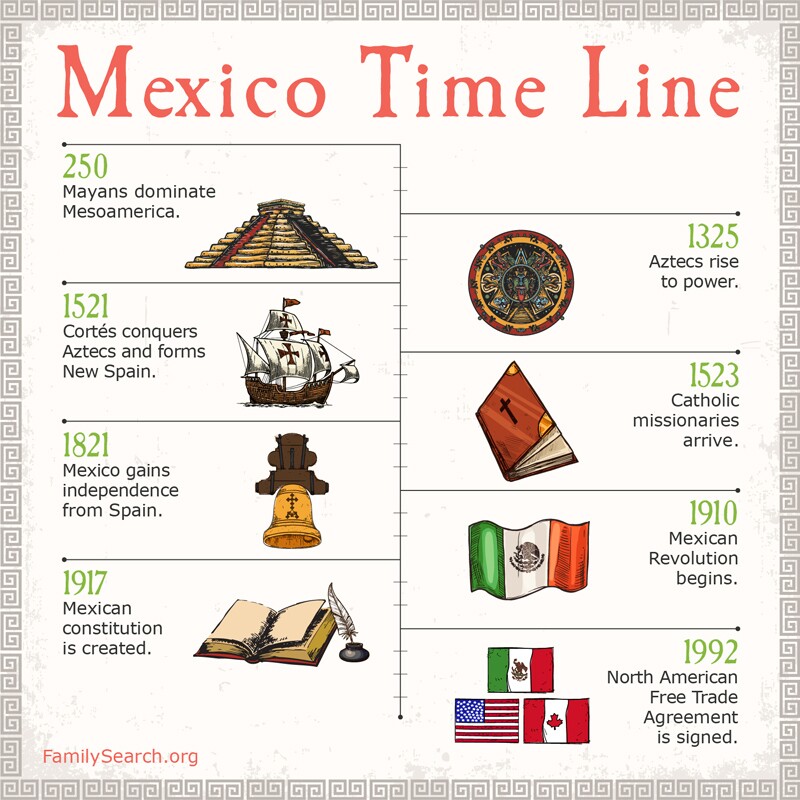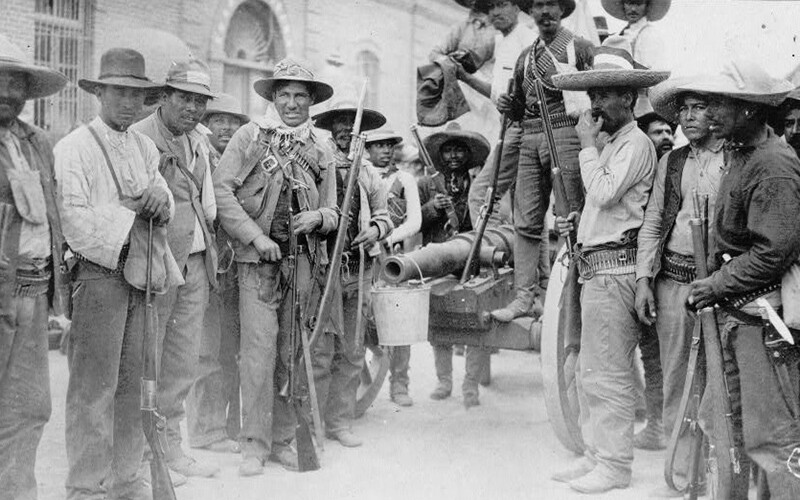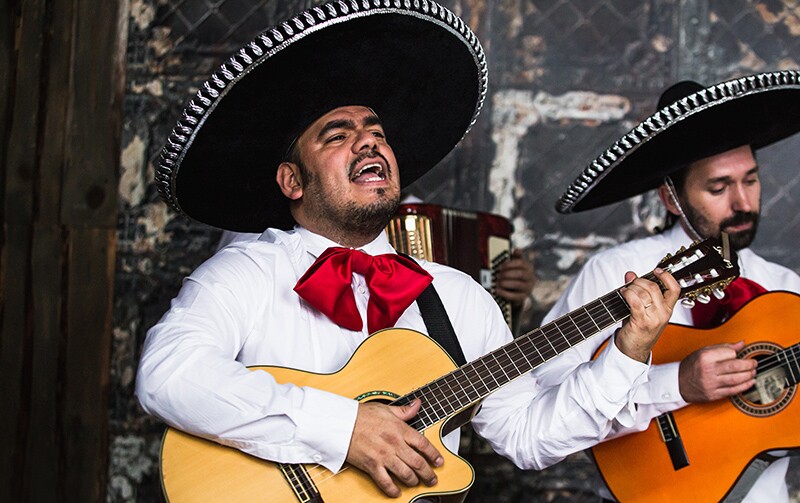When you connect with your Mexican heritage, you discover that your ancestors are people you are related to and you can relate to.
Your Mexican heritage could be eating pan de dulce together at the end of a long day, celebrating a Quinceañera in your family, gathering together at grandmother’s to enjoy her delicious food, or never being alone because your family always has your back.
In many ways, a Mexican heritage is a heritage of family, and one way you can connect to your heritage is by connecting to your family—past and present.
As you learn more about your ancestor’s life, you learn more about your own. To better understand your Mexican heritage, you can dive into Mexico’s colorful past or discover more about traditional Mexican food, Mexico’s renowned celebrations, and other uniquely Mexican customs.
The Colorful Tapestry of Mexico’s Past

In the Mexico City neighborhood of Cuauhtémoc, there is a public square called the “Plaza de las Tres Culturas,” or “Plaza of Three Cultures.” The cultures represented here provide a framework for understanding Mexico’s past, which can be divided into three periods: pre-Hispanic, colonial, and modern.
Pre-Hispanic
The pre-Hispanic period saw the flourishing of native peoples such as the Aztec, Maya, Olmecs, Zapotecs, Toltecs, and others. They developed writing and calendar systems, built large and beautiful cities, and engaged in trade.
Colonial
The conquest of Mexico by the Spanish in the 1500s began the colonial era and brought European influences and traditions to Mexico and surrounding areas. The introduction of Christianity resulted in most inhabitants embracing Catholicism, which remains the dominant religion of Mexico today.
Modern

Spanish rule lasted approximately 300 years and ended when Mexico gained its independence in 1821. The next several hundred years saw leaders such as Antonio López de Santa Anna, who created the constitution that established a federal Mexican republic, and Porfírio Díaz, whose policies promoted economic growth but tended to favor the rich at the expense of the poor. The economic imbalance and even corruption finally led to the Mexican Revolution in 1910.
Key developments after the Mexican Revolution included the growth of the oil industry, Mexico’s involvement in World War II, the lowering of trade barriers with the North American Free Trade Agreement (NAFTA), and continued progress toward the goal of political stability.
Life in Mexico
For thousands of years, agriculture was a mainstay of Mexican civilizations, supplemented by hunting and fishing. Over time, other industries arose, such as oil and technology. Yet even today, the pace of life is slower compared to many other modern cultures. There is a strong belief that life is meant to enjoyed, even savored.

| 
|
Music of Mexico
The music of Mexico is diverse, reflecting pre-Hispanic, folk, Spanish, European, and other influences. Traditional musical styles include:

- Lively mariachi songs.
- Corridos, ballads which feature legends of the past or other stories in song.
- Banda, influenced by military bands.
Modern styles blend traditional and contemporary musical genres, as demonstrated by Mexican pop-rock singer Natalia Lafourcade. Natalia delighted audiences at RootsTech 2018 with a selection of her songs, including “Remember Me” from the movie Coco.
Folk dancing continues to be popular in Mexican culture. The Jarabe Tapatío, or Mexican hat dance, is perhaps the most widely known dance, but other dances include the concheros, sonora, and chiapas.
Family in Mexico
Most importantly, family plays a central role in Mexico’s culture. Families tend to be large and include multiple generations. Parents and elders are treated with respect, and duty to family is a strongly-held value. This love of family lends belonging and warmth to the entire community.
Are you interested in delving into your Mexican heritage?
- Check out your fan chart to see what information on your Mexican family may already be in Family Tree.
- Get additional guidance from the Mexico Genealogy page in the FamilySearch Research Wiki.
- The Mexico and Central America Genealogy Research Community on Facebook can connect you with others researching in Mexico.
- Helpful information and resources are also available on the FamilySearch Mexico Research page.
Discover More about Your Mexican Heritage
At FamilySearch, we care about connecting you with your family, and we provide fun discovery experiences and family history services for free. Why? Because we cherish families and believe that connecting generations can improve our lives now and forever. We are a nonprofit organization sponsored by The Church of Jesus Christ of Latter-day Saints. To learn more about our beliefs, click here.








